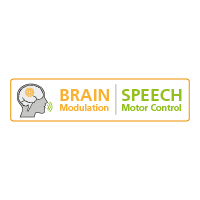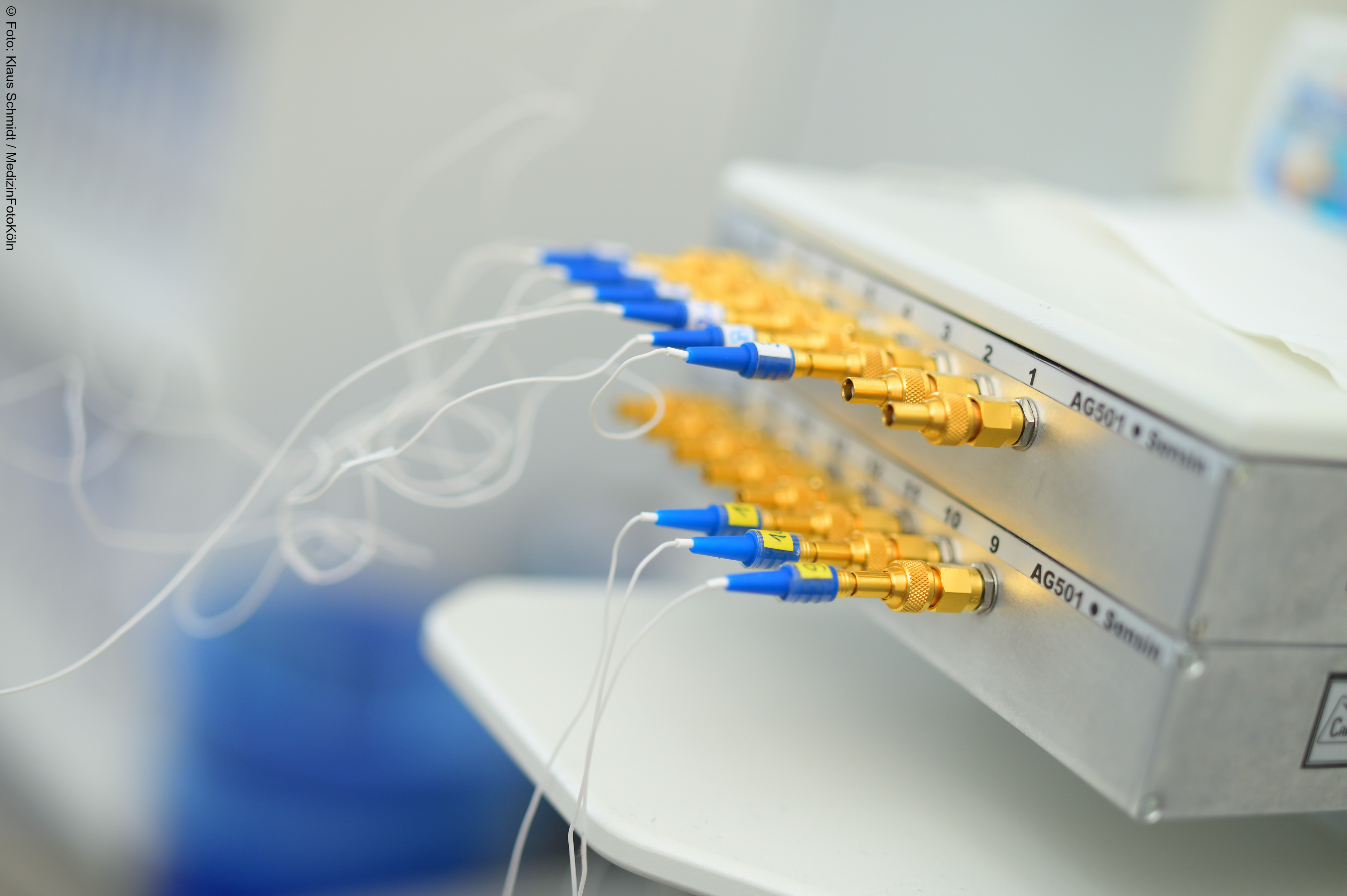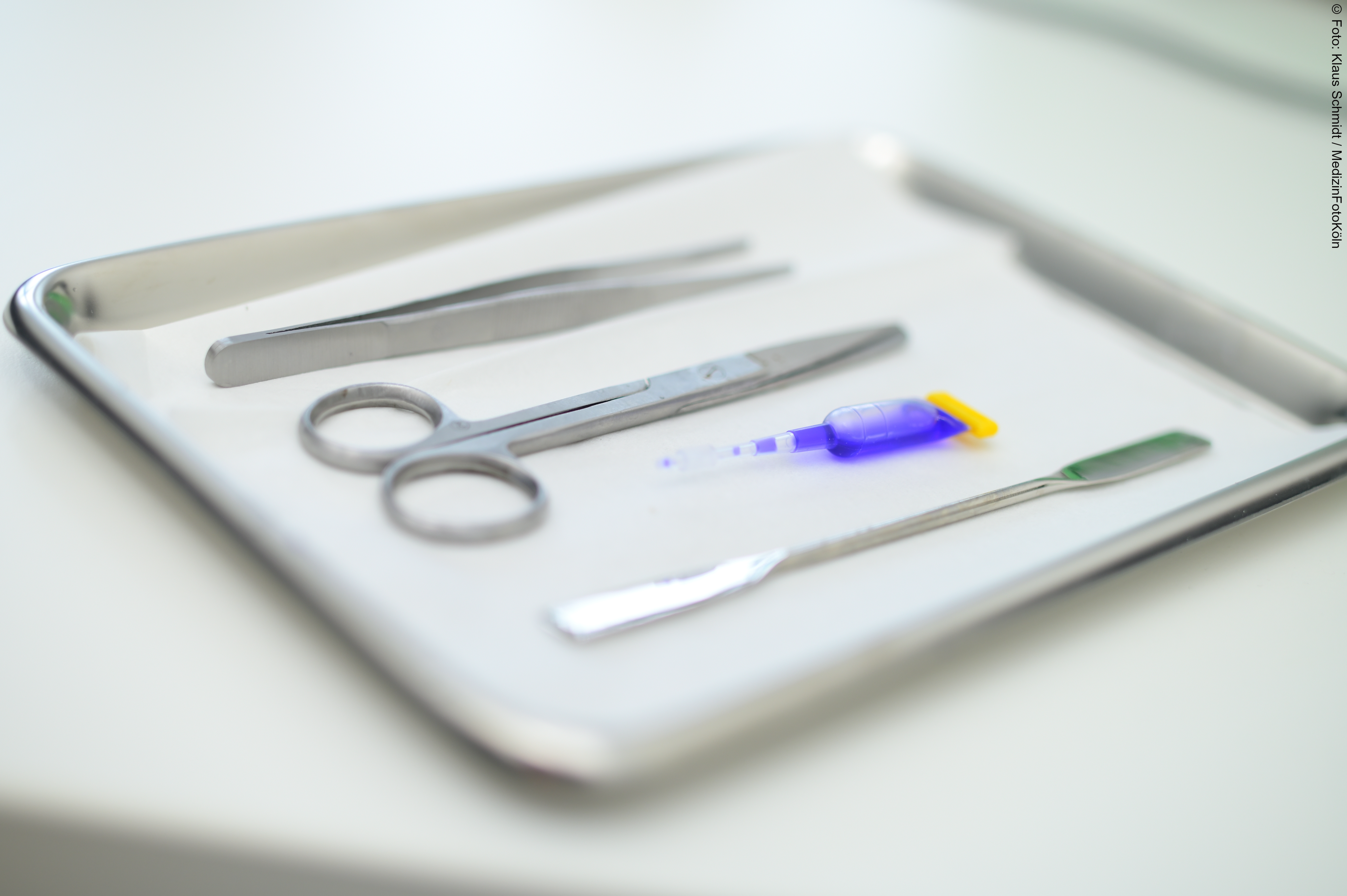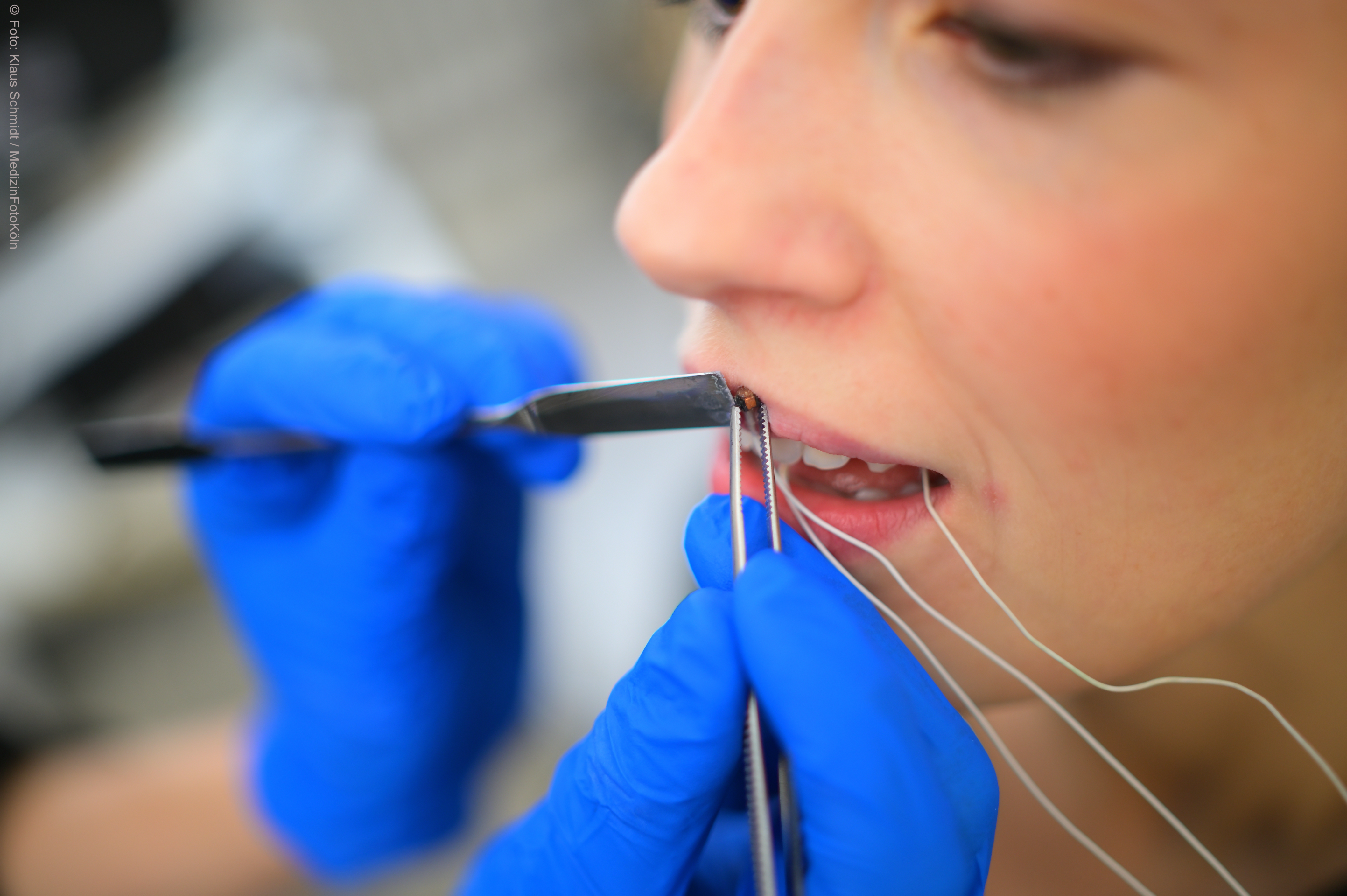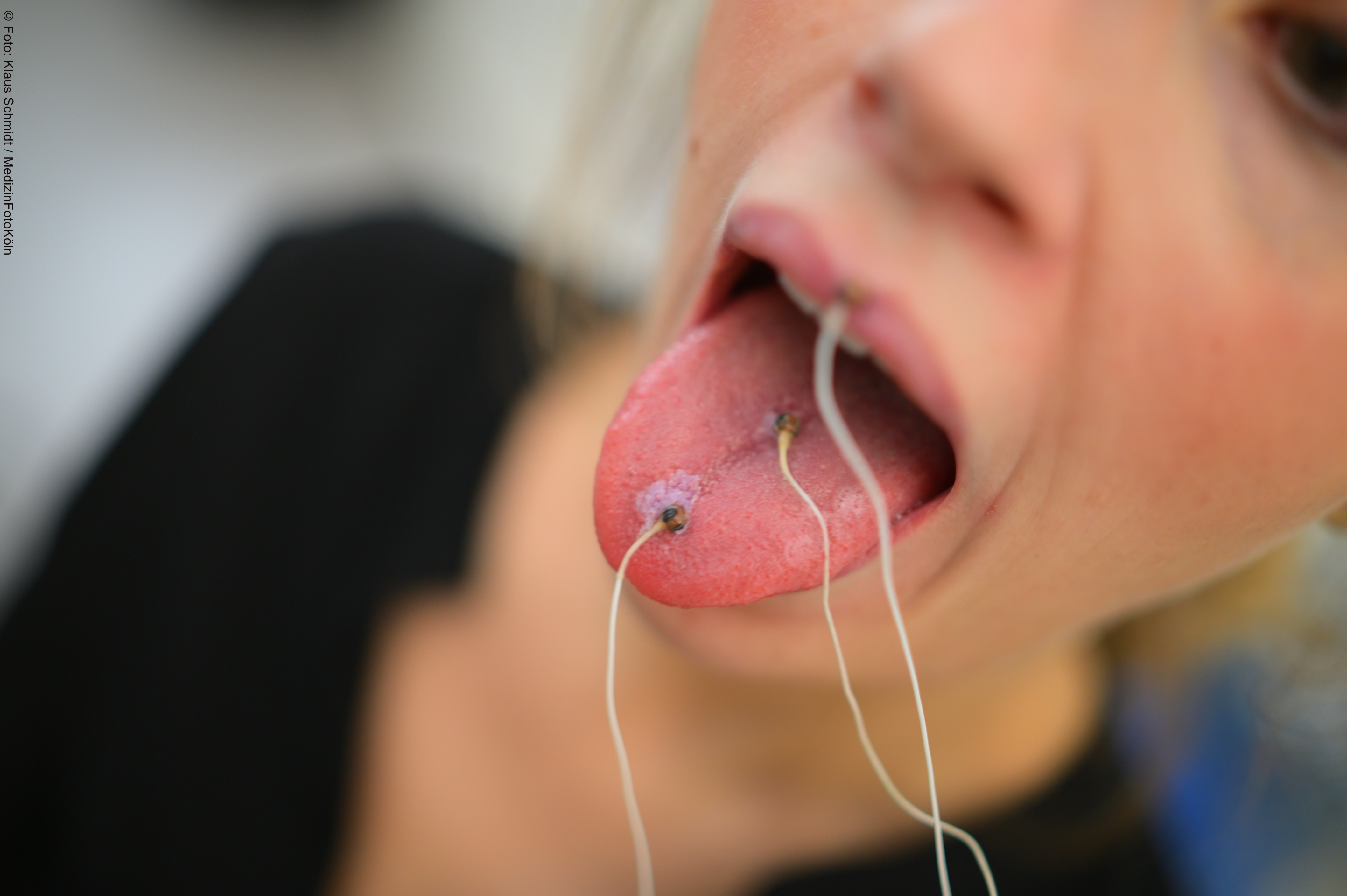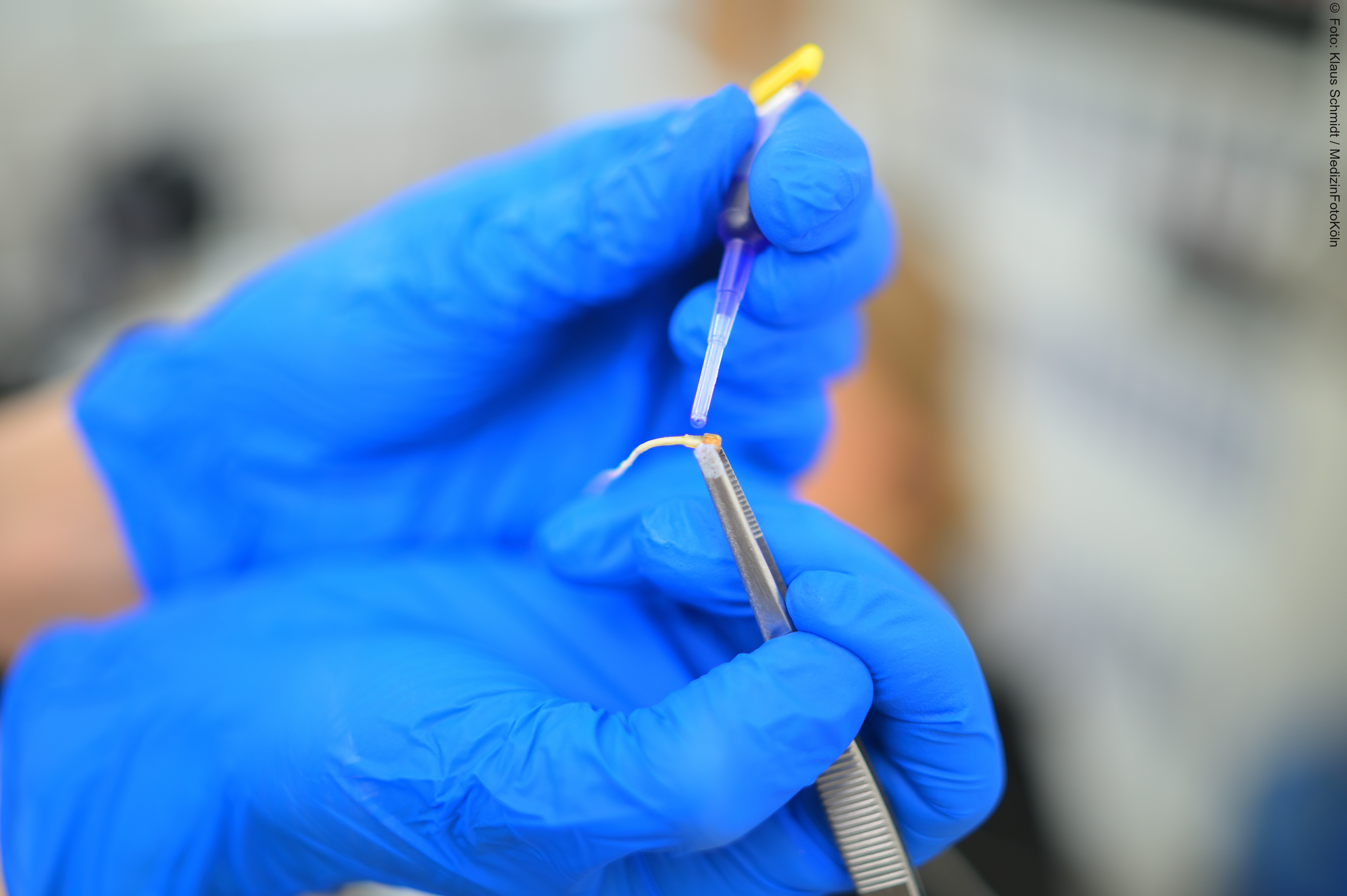To capture more fine-grained analysis of temporal and spatial aspects of speech motor control we are using the 3D-electromagnetic articulography (AG 501, Carstens Medizinelektronik GmbH). This is a method for directly capturing movements of the articulators during speech. A temporally synchronized acoustic signal of speech production is recorded as well.
Sensors for tracking speech movements are placed on the lower lip, upper lip, tongue tip, tongue body and jaw with the help of medical tissue adhesive.
The movement of the sensors can be displayed on all three planes (e.g. forward and backward movement, upward and downward movement, and right and left movement) or as a three-dimensional signal. Therefore, this method allows very good temporal as well as spatial recording of the coordination of speech movements. This is particularly important for tongue movements, which are not visible from the outside and thus cannot be recorded with simple imaging techniques.
Hardware:
- Carstens AG 501 (16 channels) and a Carstens AG501twin for dual measurements of dialogs (https://www.articulograph.de)
Software:
- MATLAB, R, Praat, The EMU-webApp
- EMA2SSFF converter: conversion of EMA data to SSFF
- ema2wav: conversion of EMA data to wav; allows for data processing of articulographic trajectories in Praat (https://github.com/phbuech/ema2wav)
